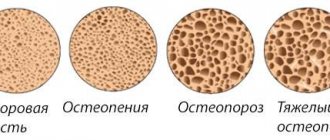What's happened
Microscopic study of biomaterial at the cellular level is called oncocytological research. In most cases, a smear for oncocytology (OC) is taken if a precancerous condition is suspected, as well as with a malignant lesion of the cervix of the uterine body.
An oncocytology test is necessary in order to obtain and interpret the result of a study of a sample of pathological mucous taken from the cervix and vagina. A special device is used to take a biopsy sample. This manipulation is carried out in a gynecological office. The method is one of the most accessible and inexpensive. Used in all medical institutions.
The main task of this method is to identify pathological changes in the cellular structures of the epithelial tissue of the cervix of the reproductive organ and vagina as early as possible.
In addition, this procedure allows you to monitor the dynamics of the disease and the effectiveness of the therapeutic measures taken.
After the material is collected, the oncocytological smear is sent to the laboratory for further cytological examination. After a complete examination of the biopsy, the specialist issues a final conclusion.
What risk groups exist?
Some groups are more likely to get cancer than others. For example, people with fair skin, unlike dark-skinned people, are susceptible to melanoma. There are also a number of external factors that negatively affect the human body and provoke the transformation of cells into cancer cells.
One of the most well-known causes of cancer is heredity. If there have been cases of stomach cancer in the family, then the children will have a predisposition to this particular type. The human gene contains information about such pathologies. To determine the likelihood of a disease occurring, special tests are used to determine predisposition to it. They are intended for genome research.
When else is an analysis required for the presence of cancer cells in the body? Some occupations have an increased risk of cancer. For example, for workers who work in a variety of production areas. If a person is constantly in contact with chemicals and hazardous substances, heavy metals, resins, asbestos, chemical dyes and various types of radiation, then he is exposed to carcinogenic effects.
Defects in the functioning of the immune system also cause a decrease in the body's resistance to a number of infections, viruses and bacteria. Cancer can develop due to weak immunity.
Kinds
Gynecologists distinguish several types of techniques that have varying degrees of research accuracy.
Leishman method
It is more outdated and involves traditional painting and fixing of elements. As a rule, it is used in small clinics located remotely from the city center. During decoding of the obtained data, simple oncocytological changes are determined.
Papanicolaou method
It is considered the most common manipulation. The accuracy of the OC smear will be slightly higher compared to the procedure described above. Biological material is applied to the entire surface of the glass slide and fixed with a special solution. After this, he is sent for laboratory testing.
The study of cell composition is carried out in the form of a polychrome micropreparation. Due to the fact that in this case more modern staining methods are used, the analysis for cancer cells is the most accurate and high-quality, which makes it possible to identify precancerous pathological processes in the initial stages of development.
Liquid cytology
This is a more modern method that allows oncocytological examination to be carried out with maximum accuracy.
The method of this manipulation is that a smear is taken and immediately placed in a liquid medium. A special device is used to clean the biopsy from foreign objects. The material is placed on the glass in a thin layer.
The main advantage of this technique is that there is no likelihood that some of the elements will be lost during transportation.
On this topic
- Other diagnostic methods
What is the difference between histology and cytology
- Olga Vladimirovna Khazova
- December 4, 2020
Deciphering requires a lot of time and highly qualified specialists.
Another advantage of liquid oncocytology is that after receiving the result, the smear can be used to study the protein. Detection of their breakdown means that there is a possibility of dysplasia or cancer of the cervix of the uterine body.
When is tumor marker analysis necessary?
You should undergo an examination if there is a prolonged deterioration in your health in the form of weakness, constant low temperature, fatigue, weight loss, anemia of unknown origin, enlarged lymph nodes, the appearance of lumps in the mammary glands, changes in the color and size of moles, disturbances in the gastrointestinal tract, accompanied by the discharge of blood after defecation, obsessive cough without signs of infection, etc.
Additional reasons are:
- age over 40;
- family history of cancer;
- exceeding the normal range of biochemical analysis and blood test results;
- pain or prolonged dysfunction of any organs or systems, even to a minor extent.
The analysis does not take much time, while helping to identify a life-threatening disease in time and treat it in the least traumatic way. In addition, such examinations should become regular (at least once a year) for those who have relatives with cancer or have crossed the age of forty.
Indications
An analysis to detect cancer cells is prescribed in the following situations:
- irregular menstrual cycle;
- frequent occurrence of pain in the lower abdomen;
- long-term treatment hormonal drugs;
- the presence of papillomavirus , which has increased oncogenicity;
- development of pathological processes of infectious or inflammatory origin;
- many sexual partners;
- presence of infertility;
- the likelihood of having an intrauterine device installed.
Even if there are no complaints, it is still recommended to take this test, since certain pathologies can be asymptomatic for a long time.
How to recognize cancer in the early stages?
There is an effective way to detect oncological processes, the price of which is much lower than the cost of treating an advanced stage of the disease. The World Health Organization recommends that every person in a state of relative health at the age of 30-40 years be tested for tumor markers in order to determine the relative norm.
Subsequently, obtaining laboratory data will be focused on the first, conditionally normal, but for each person their own risk group will be determined, inclusion in which dictates the frequency of obtaining laboratory data. Changes in results will indicate the need for further diagnosis.
Contraindications
Despite the effectiveness of oncocytological research, it may not always be used.
First of all, the procedure is postponed if there is certain discharge. It is not recommended to do the analysis in case of acute inflammation, in the presence of itching and during the menstrual cycle. This is explained by the fact that in such conditions it will not be possible to conduct a qualitative assessment of cellular structures, since the presence of erythrocytes and leukocytes in the collected biological material will hide atypical cells from the detection area.
General blood test for cancer
As part of general clinical primary research, a standard blood test is prescribed. It cannot be a clear marker of the presence of an oncological process even at the initial diagnosis, but it often indicates systemic malfunctions in the body. So, with cancer, quite often the following parameters of a general blood test deviate from typical norms:
- The levels of leukocytes and ESR increase , a high concentration of myeloblasts and lymphoblasts is diagnosed in the biomaterial;
- Platelet and hemoglobin levels are usually low.
Preparation
To obtain the most reliable results, it is necessary to be well prepared for the oncocytological procedure.
Preparing for the analysis involves following certain recommendations given by the attending physician.
First of all, you need to remember that you can donate biomaterial at any time except the days of menstruation. The best period is considered to be the time immediately after the cessation of menstrual flow or immediately before its appearance.
On this topic
- Other diagnostic methods
BRAF mutation
- Olga Vladimirovna Khazova
- October 17, 2020
Two days before the scheduled date for oncocytology, it is necessary to exclude sexual contact, refuse to use tampons, various ointments and gels, and suppositories intended for vaginal administration.
Douching and bathing are not recommended.
It is recommended to refuse any procedures performed in a gynecological chair.
Three hours before the procedure, you should not go to the toilet, which may negatively affect the results of the study.
Stages of cervical cancer
Incidence statistics do not include pre-invasive cancer (in situ). This stage of cervical cancer is often combined with grade 3 dysplasia, since the treatment is absolutely identical. For tumors that have penetrated deeper, a special classification has been created. It allows you to determine the prognosis and treatment of the disease.
Stage I: The tumor does not extend beyond the uterus.
- IA – tumor that has penetrated less than 5 mm
- IB – tumor that has penetrated more than 5 mm deep
Stage II - A tumor that has spread beyond the uterus (but has not affected the walls of the pelvis and the lower third of the vagina) Stage III - A tumor that has spread to the walls of the pelvis or the lower third of the vagina Stage IV - A tumor that has penetrated beyond the pelvis or has invaded the bladder or rectum.
Progress
To obtain reliable results when taking a smear for oncocytology, it is necessary to follow certain rules for collecting biological material. The manipulation occurs at the moment when the gynecologist conducts a routine examination of the patient before performing a two-manual examination of the uterine body.
The procedure involves performing a number of successive steps.
First of all, a speculum is inserted into the vagina. This will allow access to the cervix for a visual assessment of its condition.
On this topic
- Other diagnostic methods
What is a cytological examination
- Olga Vladimirovna Khazova
- May 27, 2020
Next, using cotton swabs, the doctor cleans the uterine cavity of any secretions.
A special sterile spatula is used to take a smear. Scraping is usually done from three different areas. These are the cervical canal, the vaginal vault and its lateral walls.
After obtaining the biomaterial, it is placed on a glass slide. It is allowed to apply 3 samples to a common surface.
To prevent the cells from drying out, they are covered with a protective layer. To do this, you can use aerosols intended for such purposes or ethanol.
If liquid-based cytology is performed, the biopsy sample is collected using a cytobrush. Subsequently, it is immersed in a test tube with a previously prepared specific liquid medium. Such measures significantly increase the accuracy of cytological examination.
Tissue scraping is carried out from the surface of the cervical canal. This is necessary to identify pathogens that can be transmitted during sexual contact. A sterile brush or cotton swab is used to collect biomaterial. The resulting biopsy is applied to a separate glass.
After the gynecological examination is completed, the slides containing the samples are sent for laboratory testing, where they will be examined under a microscope.
If the Leishman method or PAP test is used for oncocytology, the result will be ready in about two weeks. When performing liquid-based cytology, it takes about 5-10 days to interpret the analysis.
Normal content of tumor markers
It cannot be said that one type of tumor marker corresponds to only one tumor. Often, identifying an increase in the number of one type of tumor marker is an indicator of several localizations of tumors.
| Tumor marker name | Normal indicators |
| P.S.A. |
|
| hCG |
|
| APF | Up to 15 IU/ml. |
| SA-125 | Up to 30 IU/ml. |
| SA 15-3 | Up to 31 U/ml. |
| SA 19-9 | Up to 37 U/ml. |
| CEA |
|
| SA 72-4 | Up to 6.9 U/ml. |
| SCC | Up to 1.5 ng/ml. |
| SA-242 | Up to 20 U/ml. |
| Not-4 |
|
| NSE | Up to 16.3 ng/ml. |
| S100 | Up to 0.105 µg/l. |
One and the same indicator can indicate different types of cancer, and in some cases even non-cancerous diseases.
What diseases will it show?
Thanks to oncocytological analysis, the following pathological processes can be identified:
- dysplasia;
- presence of malignant cells;
- inflammation;
- bacterial, fungal, viral lesions.
In addition, this study allows us to determine what reaction the body gives during therapeutic measures aimed at eliminating diseases and infectious lesions, as well as during hormonal treatment or taking other medications.
Is it possible to find out if there is cancer from a blood test?
A fairly large number of patients who have primary signs of cancer want to find out as soon as possible whether they have this problem.
What blood test shows cancer? Unfortunately, there is no simple, quick and 100 percent correct test that could immediately clearly indicate the presence of cancer in a person. In general, the patient is prescribed a classic set of laboratory clinical tests, which allows one to obtain the most general idea of possible pathological processes occurring in the body.
As a rule, the presence of a neoplasm is indicated by a very high number of leukocytes in the blood, a decrease in hemoglobin concentration over time, as well as a significant increase in ESR.
However, this information is clearly not enough to make even a preliminary diagnosis, since such a picture can accompany a number of other pathologies, syndromes, both inflammatory and infectious.
The most effective and targeted option for determining the primary diagnosis in the vast majority of cases is an extended blood test for tumor markers, which are formed in sufficiently large quantities at the stage of the inception of tumor formation processes.
Decoding the result
A negative result is possible if there are no pathological changes in the cellular structures, there are no pathogenic microorganisms, and there is no violation of the integrity of the cells.
A bad smear for oncocytology will occur if atypical cells are detected in the mucous membrane of the cervix of the uterine body, differing in the type and shape of the structure.
The interpretation of the obtained data is carried out exclusively by the gynecologist during the next examination of the patient. However, even after consultation, a woman may not receive a definitive diagnosis.
On this topic
- Other diagnostic methods
Features of sputum cytology
- Olga Vladimirovna Khazova
- May 27, 2020
Thanks to oncocytological research, it is only possible to identify changes in cellular structures. The true provoking factor of such abnormal conditions can only be determined by performing a biopsy, ultrasound examination and colposcopy.
When studying a biopsy, a specialist obtains certain results.
First stage
The analysis did not show an inflammatory process. Women's bodies are healthy. No pathological abnormalities of the pelvic organs and cervix were detected.
It is worth noting that a smear of a young woman may contain cellular structures of the intermediate or superficial layer of 4-layer squamous epithelium. As a rule, in normal condition, their deep location is noted.
Second
No atypical cells are observed. However, it is established that the overall composition of cells undergoes certain changes. The specialist receives a cytogram of inflammation.
Third
A small number of abnormal cellular structures are present in the smear. This picture can be detected in the presence of precancerous conditions, for example, dysplasia or erosion. To confirm the preliminary assumption, an extended colposcopy is performed.
Fourth
The presence of fully formed cancer cells is noted. The occurrence of such changes is facilitated by the development of dysplasia in a more advanced form.
Fifth
A specific picture of cancerous lesions of the cervix of the uterine body is observed. In this case, the oncologist immediately requires all necessary therapeutic measures.
It is important to know that a smear result related to stages 2-4 may indicate the presence of genital herpes, papillomavirus, cervicitis or vaginitis.
Diagnostic procedures to identify the disease
The main cause of cervical cancer is considered to be papilloma present in the body. Virus types 16 and 18 are especially dangerous. If cancer is suspected, women are tested for the presence of the papilloma virus.
Diagnosis using tumor markers
With each oncological process, specific antigens are present in the blood. A certain tumor marker shows the type of disease. The test for cervical cancer is called the SCC antigen blood test. The higher the tumor marker level, the more advanced the disease. The analysis helps determine the stage of oncology and adjust the course of therapy. Blood is donated again during treatment to determine the effectiveness of therapy. A relapse is detected with a further increase in the indicator.
But doctors do not consider this analysis accurate in establishing a diagnosis, because the indicator may increase not only due to cancer formation in the tissues of the cervix, but also for other reasons. Diseases of the respiratory system, pelvic organs and others can provoke an increase in levels. The woman is prescribed additional procedures that will confirm or deny the presence of cancer. If the diagnosis is confirmed, the blood is tested for antigen throughout the entire treatment course - this helps to monitor therapy and, if necessary, make adjustments.
Liquid cytology
The procedure requires taking a smear from the surface layers of the cervix. Cytology is a simple and accurate analysis that helps identify a malignant tumor with other pathologies. The procedure is safe and painless. Here an abnormal cell is identified that mutates and becomes cancerous. The earlier such a pathogen is detected, the sooner treatment can begin, which guarantees a complete recovery.
The analysis is done during a routine examination by a gynecologist. The doctor thoroughly cleans the surface of the vagina and uses a special brush to remove a certain amount of biological material. Everything is placed on glass and handed over to the laboratory assistant.
In the laboratory, the resulting material is examined under a microscope on special glass. Deciphering the analysis may take about 7 days. Using liquid cytology, cell size and arrangement are examined. The results obtained are transmitted to the attending physician for further treatment.
The procedure helps to detect the disease in the early stages of formation. Therefore, doctors recommend getting tested 1-2 times a year. Additionally, manipulations are prescribed for the following factors:
- pregnancy is planned in the near future;
- there was a disruption in the menstrual cycle;
- the woman was diagnosed with infertility;
- if you have several sexual partners;
- several diseases that can cause cancer have been diagnosed - genital herpes, condylomas, etc.;
- was taking hormonal contraceptives for a long period of time;
- there is foreign discharge from the vagina;
- the doctor suspects an oncological formation in the tissues of the cervix.
The analysis is effective in detecting papillomavirus and cancer. There can be two results:
- Normal indicates the absence of pathological cells and other structural abnormalities in the cervical area.
- Pathological is established when cells with a mutation in the chromosome set are identified, which can cause the disease.
The advantages of the procedure are the following aspects:
- Ease of collecting biological material.
- The quality of the material is maintained for a long time, which allows it to be transported to the laboratory without difficulty.
- You can make a monolayer smear.
The disadvantage of the manipulation is the inability to determine inflammatory processes due to the removal of cells of the leukocyte group. This requires an additional smear for oncocytology.
Colposcopy
The diseased organ is examined using a colposcope. The device has several magnifying glasses with different resolutions. The uterine body, cervix and cervical canal are examined by a gynecologist, which helps to detect problem areas with structural changes in the tissues. The presence of mutations in specific areas indicates the presence of a precancerous condition in the cervix or an oncological neoplasm.
The procedure is considered highly informative in the study of a woman’s pelvic organs. The colposcope allows you to magnify the area under study several times in order to study the suspicious area in detail. If cervical cancer is suspected, this procedure is prescribed as a clarification for a preliminary diagnosis. It is recommended to carry out manipulations soon after the menstrual cycle, but before the onset of ovulation.
Diagnosis with a colposcope is considered safe and there are no side effects. But there are several contraindications when you should not conduct research:
- within 1-2 months after the birth of the child;
- after artificial termination of pregnancy it is prohibited for up to 1 month;
- after surgery on the tissues of the cervix, you need to wait 2-3 months;
- during the menstrual cycle or other uterine bleeding;
- An inflammatory process in the uterus or cervix with purulent discharge was diagnosed.
In the absence of such factors, the procedure is carried out according to the regular schedule in agreement with the attending physician.
Hysteroscopy
The cervical canal can be examined when hysteroscopy or cervicoscopy is prescribed. The examination takes place on an outpatient basis. The patient is given an epidural or general anesthetic to eliminate pain and discomfort during manipulation.
For the study, a special device is used - a hysteroscope, which is a fiber-optic probe. It is inserted into the vagina and secured using special fasteners. Various manipulators required for examination are inserted through the probe. The doctor obtains biological material from the tissues of the cervical canal and examines it in the laboratory.
Cervical biopsy
A biopsy involves examining a piece of tissue from the problem area under a high-resolution microscope. The material is obtained during colposcopy or hysteroscopy. A procedure is prescribed to examine the cells for malignancy. After the examination, the doctor can assess the woman’s condition and decide on a course of therapy. There are several types of manipulation.
Colposcopic biopsy can be performed during a routine examination by a gynecologist using special equipment - a colposcope. A colposcope is inserted into the vagina and then a suspicious area of tissue is pinched off using a manipulator. The woman does not experience discomfort or any other pain, and therefore does not require anesthesia.
An endocervical biopsy involves scraping diseased tissue from a small area of the cervix. During the manipulation, a special gynecological instrument is used - a curette.
Wedge biopsy is performed using the following methods:
- Loop excisional biopsy is highly traumatic, which is accompanied by the formation of residual scars on the neck. The doctor inserts a loop-shaped manipulator that passes an electric current. The diseased tissue is peeled off, which is then sent to the laboratory for study.
- Cryoconization involves using liquid nitrogen instead of electric current to peel away pathogenic tissue. In terms of manipulation, the procedure is similar to a loop excisional biopsy.
- Radio wave conization is the collection of biological material using a radio wave knife.
Biopsy is considered a more informative method in contrast to oncocytology and colposcopy. A study is prescribed only if there are serious suspicions of possible pathologies of an oncological nature.
Ultrasound examination of the pelvic organs
During pregnancy, some procedures are contraindicated. A poor blood test showing high levels of antigen requires further investigation. In this case, ultrasound examination of the pelvic organs becomes effective.
There are three types of procedures: transrectal, transvaginal and transabdominal. A special sensor is inserted through the rectum. Therefore, the intestines are first cleansed using an enema. Examination of organs through the abdominal wall requires pre-drinking a large amount of liquid - 1-2 liters.
Data from the sensor is displayed on the monitor - the appearance of the surface layer of the cervix, the patency and echogenicity of the passages are studied. The presence of oncology is indicated by the rounded shape of the cervix, uneven structure of the epithelium, and pathological deviation from the uterine body.
Cystoscopy with rectoscopy
The oncological process at the fourth stage is considered inoperable. To determine the area of spread of metastases throughout the body, cystoscopy is prescribed. Using the procedure, it is possible to identify secondary lesions in the tissues of the bladder, intestines and other organs.
This helps determine the course of treatment. After exposure to radioactive substances, a repeat cystoscopy examination is carried out, which makes it possible to establish the effectiveness of the courses. Rectoscopy is performed if carcinoma cells are suspected in the tissues of the rectum. The procedure follows the same procedure as cystoscopy.
Test for human papillomavirus
The procedure involves taking a smear from the cervical canal of the cervix. The material is obtained using a disposable soft-bristled brush. The brush is inserted into the cervical canal, and the doctor performs a rotational action to obtain material from the surface epithelium.
The resulting material is transferred to medical glass and placed in a microscope for further study. The brush is placed in a special container and sent to a laboratory for the study of viral diseases.
What can distort the result
The data obtained during an oncocytological study may not always be correct. Several factors may influence this.
First of all, distortion is possible against the background of a radical change in hormonal levels in patients at a young age. Unreliability of the analysis is possible if the collection of biological material was carried out during the menstrual cycle.
An equally important role is played by the correct implementation of all preparatory instructions. If the necessary hygiene procedures are not followed, the sample may become contaminated with suppositories, gels, ointments or sperm used.
Cervical erosion and cancer
Quite often you can hear the diagnosis “cervical erosion”. This is an imprecise term. Most often, it refers to ectopia, a condition that is normal for 25% of young women. With this feature, the columnar epithelium lining the cervical canal replaces the multilayered one. As a result, the transformation zone shifts outward. In most cases, ectopia does not require treatment, has no symptoms, and is certainly not a precancerous condition. The only recommendation: regular monitoring by a gynecologist.
Results
When diagnosing oncological tumors, a number of laboratory, instrumental and hardware examinations of the body are used. Blood tests refer to laboratory methods that include:
- general clinical analysis;
- biochemical microscopy;
- research on tumor markers;
- coagulogram.
The presence of a tumor process is reflected to a greater or lesser extent by the results of all these tests. In the OKA, the amount of hemoglobin and formed elements of biofluid (erythrocytes, platelets, leukocytes) changes. Biochemistry determines deviations in the organic composition of the blood (non-standardized indicators of enzymes, protein, pigments, glucose). The coagulogram shows high blood clotting.
The most informative is testing for tumor markers. These are specific biosubstances, representing a set of molecules, the activity and concentration of which increases sharply with the development of oncopathological processes. Cancer indicators determine the location of the tumor and the stage of development of the disease.
Depending on the results (whether the analysis shows cancer or not), the patient is prescribed an extensive examination on a tomograph (CT, MRI) and an instrumental biopsy procedure of the organ where a malignant tumor is potentially present.
You can donate blood for tumor markers in Moscow, St. Petersburg and other large cities of the Russian Federation. OKA and biochemistry are performed in any medical institution (hospital and clinic, clinical diagnostic center at the patient’s place of residence).
When and how often should I have a smear for oncocytology?
Starting from the age of 18, every girl must undergo this type of diagnosis once every year. The frequency of analysis increases for women who are at risk:
- age exceeds 35 years;
- abuse of tobacco smoking, psychotropic drugs and alcohol;
- long-term use of oral contraceptives;
- girls who had sexual intercourse very early;
- frequent change of partner;
- positive HIV and HPV status;
- STD;
- when identifying erosion or endometriosis;
- often recurrent inflammatory diseases of the pelvic organs;
- often recurrent genital herpes or cytomegalovirus infection;
- identification of oncological episodes in the pedigree;
- if the menstrual cycle fails.
Oncocytology for pregnant women
During pregnancy, the frequency of analysis can increase up to three times. This fact is due to the need for early detection of pathological processes that may threaten the mother and child.
Important: the procedure is performed only if the pregnancy is normal and the patient is in complete health.
If pathological conditions are detected, the study is postponed until complete recovery.
If the biomaterial collection technique is implemented correctly, the procedure does not harm the woman, is painless and does not affect the course of pregnancy.
Oncocytology for older women
It is a mistake to believe that during postmenopause women have a reduced risk of developing gynecological diseases. Oncology affects people at any age. Moreover, against the background of concomitant diseases, the risk of pathologies of the internal genital organs increases. That is why women over 55 years of age are recommended to undergo this test at least twice a year.
The procedure for collecting material for research and the algorithm for conducting the research itself is similar to that for young girls. This does not cause any discomfort or pain to elderly patients. Timely diagnosis of any pathological condition will allow treatment to begin as early as possible, achieving the most favorable outcomes, including complete recovery.
Cancer and pregnancy
Finding a cervical tumor during pregnancy is a fairly rare occurrence. Due to changes in immunity, cancer in women in this position develops faster and is more aggressive. Unfortunately, in the first trimester, the only way to save the patient’s life is to terminate the pregnancy, followed by radiation and surgery. Only in the third trimester is it possible to postpone treatment until the fetal lungs mature and cesarean section. Usually wait until 32 weeks of pregnancy. At the same time as a caesarean section, surgery to remove cervical cancer is also performed.
Treatment of cervical tumors
CC is not a death sentence. Modern treatment methods can completely cure this disease. In the early stages, it is possible to preserve the organ and reproductive function. At later stages, an integrated approach is used. As a result, the woman loses the opportunity to have children, but the quality and duration of her life remain high. Before determining treatment tactics, the doctor must study the histological examination of the tumor and determine its stage.
- Conization of the cervix (for non-invasive cancer)
Removal of part of the cervix in the form of a cone is the most common operation for severe dysplasia and carcinoma in situ. The intervention is performed under anesthesia (general anesthesia or epidural anesthesia). If mild or moderate dysplasia is suspected, doctors try to avoid this operation.
There is some risk for nulliparous women: the lumen of the cervical canal may narrow and become overgrown, which will lead to difficulties in conception and pregnancy. However, the benefits of complete in situ removal of non-invasive cancer far outweigh any possible risks. The removed fragment is sent for histology to make an accurate diagnosis.
- Extended hysterectomy
Most often, extensive surgery is used for treatment to remove the uterus, surrounding tissue and part of the vagina. Such volumes of intervention are due to the fact that most cancer cases are advanced. In rare cases of microinvasive cancer, women undergo cervical removal only (if pregnancy is planned). This treatment is possible for stage 1 cervical cancer.
- Radiation therapy
Radiation is the main treatment for cervical cancer. It is used as an addition to surgery in the initial stages or as the only method in advanced processes. Radiation therapy is often used to alleviate the suffering of the patient in advanced cases. After treatment with rays, complications are possible in the form of lesions of the skin and internal organs, which are most often harmless.
- Chemotherapy
Chemotherapy drugs (cisplatin) are used for treatment quite rarely, and only as an addition to surgery and radiation.
| Pap Score | Treatment of invasive cancer |










